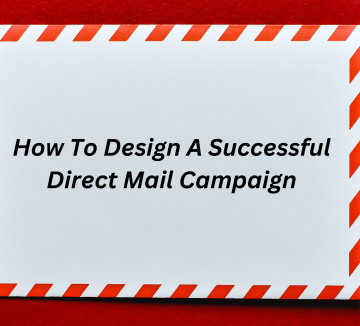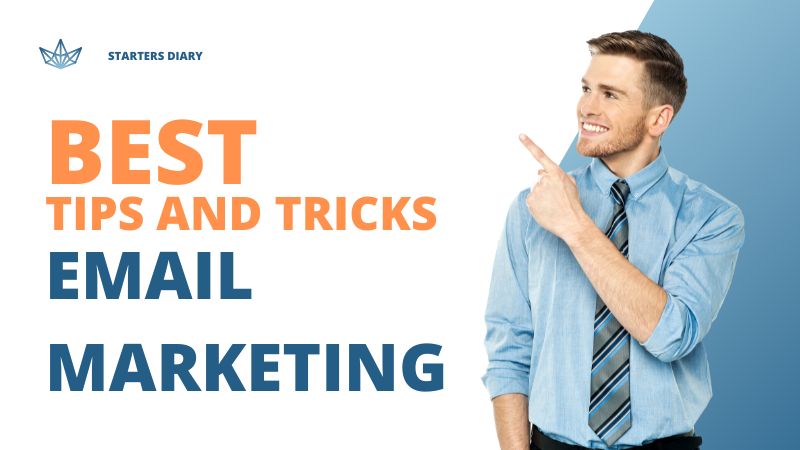Last Updated on April 7, 2023 by David
Email campaign is a crucial part of modern marketing strategies, and for a good reason.
They offer a direct and effective way to reach your target audience, and when executed correctly, they can help increase sales and revenue.
In this guide, I’ll take a detailed look at the steps involved in creating a successful email campaign, from planning to execution and beyond.
Part 1: Planning Your Email Campaign
Planning is essential for a successful email campaign. Proper planning helps you set clear goals, understand your audience, develop a cohesive strategy, improve ROI, and reduce costs.
By planning your email campaigns, you can create engaging content that resonates with your subscribers and achieves your business objectives.
Here are the important steps involved in planning a successful email campaign:
- Setting Goals for Your Email Campaign
The first step in creating an effective email campaign is determining your goal. Your goals will help guide your campaign strategy, including increasing brand awareness, driving traffic to your website, boosting sales, or improving customer engagement.
- Understanding Your Target Audience
To create a successful email campaign, you need to know who your target audience is. Understanding their needs, interests, and pain points will help you tailor your messaging and create content that resonates with them.
Demographic data, such as age, gender, and location, and psychographic data, such as values and beliefs, can be used to create a detailed picture of your target audience.
- Creating a Buyer Persona
Creating a buyer persona is a helpful tool for understanding your target audience. It involves creating a fictional representation of your ideal customer based on research and data.
This can include demographic and psychographic data, as well as behavior patterns and purchasing habits.
- Conducting Market Research
Market research is a critical part of creating a successful email campaign.
It involves gathering data on your target audience, competitors, and industry trends to inform your campaign strategy.
This can include surveys, focus groups, and social media listening.
- Developing Your Email Marketing Strategy
Once you clearly understand your goals, target audience, and market, it’s time to develop your email marketing strategy.
This involves outlining your campaign objectives, messaging, and tactics.
It’s important to align your email marketing strategy with your overall marketing goals and ensure your messaging is consistent across all channels.
Part 2: Building Your Email List
Building an email list is a crucial component of any successful email marketing campaign.
By taking the time to build a high-quality email list, you can reap a wide range of benefits for your business.
The Key Benefits of Taking The Time To Build Your Email List:
Here are some key reasons you should take the time to build your email list.
- Increased Chances of Reaching Your Target Audience:
Building an email list lets you reach your target audience directly.
By collecting email addresses from individuals who have expressed interest in your brand or product, you can communicate with them regularly and keep your business top-of-mind.
- Enjoy Increase Engagement:
Email marketing is a highly effective way to engage with your audience.
By providing relevant and valuable content to your subscribers, you can build a loyal following and increase engagement with your brand.
- Drive More and More Sales Faster:
Email marketing is also an effective tool for driving sales.
By promoting your products or services to your subscribers, you can encourage them to make purchases and increase revenue for your business.
- Cost-Effective:
Building an email list is a cost-effective way to reach your target audience.
Compared to other forms of marketing, such as print or TV advertising, email marketing is relatively inexpensive and can deliver high returns on investment.
- Personalization:
Email marketing allows you to personalize your communications with your subscribers.
Using data such as their interests, preferences, and purchase history, you can tailor your messaging and offers to their needs and interests.
- Build Trust and Credibility:
By providing valuable content to your subscribers on a regular basis, you can build trust and credibility with your audience.
This can lead to increased loyalty and advocacy for your brand.
Building an email list is crucial to any successful email marketing campaign.
By taking the time to build a high-quality list, you can reach your target audience, increase engagement, drive sales, personalize your communications, build trust and credibility, and do so in a cost-effective manner.
Steps & Best Practices For Building Email List:
Here are some practical tips for collecting email addresses to grow your email list:
- Add an Opt-In Form to Your Website: Add an opt-in form to your website where visitors can sign up to receive email communications from you. This could be in the form of a pop-up or a static form on your homepage or other key pages of your site.
- Offer an Incentive: Offer an incentive for visitors to sign up for your email list, such as a discount code or free download. This can help increase the likelihood that they will provide their email address.
- Host a Contest or Giveaway: Host a contest or giveaway where participants must provide their email address to enter. This can be a fun and engaging way to build your email list while also promoting your brand.
- Use Social Media: Use social media to promote your email list and encourage followers to sign up. Include a link to your opt-in form in your social media profiles and posts.
- Attend Events: Attend events related to your industry or niche and collect email addresses from attendees. This could be in the form of a sign-up sheet or a tablet where attendees can enter their information.
- Use Referral Marketing: Encourage your existing subscribers to refer their friends and family to your email list. Offer a reward or incentive for successful referrals.
- Use Paid Advertising: Use paid advertising on social media or search engines to promote your email list and drive sign-ups. Be sure to target your ads to your ideal audience to maximize their effectiveness.
By implementing these practical tips, you can collect email addresses and grow your email list, allowing you to reach more subscribers and achieve your email marketing goals.
Remember, growing your email list is an ongoing process. Tactics such as offering incentives, creating valuable content, and optimizing your website can help attract new subscribers.
It’s also important to regularly engage with your current subscribers and encourage them to share your content with their networks.
Finally, it’s important to ensure that you have permission to add people to your email list and that you follow email marketing laws and regulations.
Providing value to subscribers, such as exclusive content or discounts, can help encourage sign-ups.
Checkout our Ultimate Guide to Building Email List
Part 3: Crafting Your Email Content
Crafting quality email content is essential for creating effective email campaigns.
By creating engaging and relevant content, you can reap a wide range of benefits for your business.
Here are some of the key benefits of crafting quality email content:
- Increased Open Rates
Quality email content is more likely to grab your subscribers’ attention and entice them to open your emails.
This can help increase your open rates and ensure that your messages are seen by your target audience.
- Improved Engagement
Engaging email content can help keep your subscribers interested and engaged with your brand. This can lead to increased loyalty and advocacy for your business.
- Higher Click-Through Rates
Well-crafted email content can help drive clicks to your website or landing pages, leading to increased traffic and conversions.
- Stronger Brand Identity
Consistently creating quality email content can help reinforce your brand identity and create a positive perception of your business in the minds of your subscribers.
- Personalization
Quality email content can be personalized to the interests and needs of your subscribers.
By tailoring your messaging to their preferences and behaviors, you can create a more relevant and engaging experience for your subscribers.
- Builds Trust
Quality email content can help build trust and credibility with your subscribers. By providing valuable information and insights, you can establish yourself as an authority in your industry and create a sense of trust with your audience.
- Increased ROI
Effective email campaigns that feature quality content can lead to increased revenue and ROI for your business.
By engaging your subscribers and driving clicks to your website or landing pages, you can increase sales and revenue.
By taking the time to craft quality email content, you can create a more successful and effective email marketing strategy.
Here are some tips for crafting effective email content
- Writing Effective Subject Lines
Subject lines are the first thing your subscribers see, so making them count is important.
A good subject line should be attention-grabbing, informative, and relevant to your subscribers. Personalization and urgency can also be effective tactics for increasing open rates.
- Creating Engaging Email Copy
The body of your email should be engaging and relevant to your subscribers. Keep your messaging concise and focused with a clear call to action.
Use persuasive language and storytelling to connect emotionally with your subscribers and inspire action.
- Using Visuals in Your Email Campaigns
Visual content, such as images and videos, can be a powerful tool for engaging your subscribers and communicating your message.
Use visuals strategically to support your messaging and capture attention.
- Incorporating Call-to-Actions
A clear call-to-action (CTA) is essential for encouraging subscribers to take action. Use action-oriented language and place your CTA prominently in your email to maximize its impact.
- Personalizing Your Email Campaigns
Personalization can help increase the relevance and effectiveness of your email campaigns. Use subscriber behavior and demographics data to create personalized content and messaging.
Part 4: Advanced Email Campaign Creation Strategies
To take your email campaigns to the next level, consider implementing these advanced strategies:
- Segmenting Your Email List for Increased Engagement
Segmenting your email list allows you to create more targeted and relevant content for your subscribers.
Use demographics, behavior, and engagement data to create segmented lists and tailor your messaging accordingly.
- A/B Testing Your Email Campaigns
A/B testing involves sending two different versions of an email campaign to a small sample of your subscribers to determine which performs better.
Use A/B testing to optimize your subject lines, messaging, visuals, and other elements of your email campaign.
- Optimizing Your Emails for Increased Open Rates
Optimizing your emails for increased open rates involves testing and refining elements such as subject lines, preheaders, and send times.
Use data and insights from previous campaigns to inform your optimization efforts.
- Creating Email Campaigns for Lead Generation
Email campaigns can be a powerful tool for lead generation. Use tactics such as gated content, lead magnets, and landing pages to capture leads and move them through the sales funnel.
- Email Campaign Creation for E-commerce
Email campaigns can also effectively drive sales and revenue for e-commerce businesses.
Use tactics such as abandoned cart emails, product recommendations, and special offers to encourage purchases and increase customer lifetime value.
Part 5: Email Marketing Automation
Email marketing automation involves using software to automate certain aspects of your email campaigns, such as sending triggered emails, segmenting your email list, and personalizing your communications.
Here are some of the key benefits of email marketing automation:
- Saves Time: Email marketing automation can save you time by automating repetitive tasks, such as sending welcome emails or follow-up emails after a purchase.
- Improves Efficiency: By automating your email campaigns, you can improve the efficiency of your marketing efforts and focus on other important areas of your business.
- Personalization: Email marketing automation tools allow you to personalize your communications based on subscriber behavior, preferences, and other data. This can help increase engagement and build stronger relationships with your subscribers.
- Increased Revenue: Effective email marketing automation can lead to increased revenue for your business. By sending targeted and relevant communications to your subscribers, you can increase the likelihood of conversions and repeat purchases.
- Improved Customer Experience: By providing relevant and personalized communications to your subscribers, you can improve the overall customer experience and build brand loyalty.
Some of the popular email marketing automation tools include:
By utilizing these email marketing automation tools, you can streamline your email marketing efforts and achieve better results for your business.
Here are some key aspects of email marketing automation:
- Understanding Email Marketing Automation
Email marketing automation involves setting up workflows and triggers to send automated, targeted messages to your subscribers.
This can include welcome series, abandoned cart emails, and re-engagement campaigns.
- How Email Marketing Automation Can Benefit Your Business
Email marketing automation can help increase efficiency, improve targeting and relevance, and drive revenue for your business.
It allows you to create personalized and timely messages at scale.
- Choosing the Right Email Marketing Automation Tools
There are many email marketing automation tools available, each with its own features and capabilities.
Consider factors such as your budget, business needs, and integration options when choosing an email marketing automation tool.
- Setting Up Your Email Marketing Automation Campaigns
To set up effective email marketing automation campaigns, you’ll need to create workflows and triggers, define your messaging and content, and ensure that your campaigns are properly integrated with your other marketing channels.
Part 6: Analyzing and Improving Your Email Campaigns
Measuring the success of your email campaigns is essential for optimizing and improving your strategy.
Track metrics such as open rates, click-through rates, conversion rates, revenue generated, bounce rates, unsubscribe rates, and spam complaints.
Use this data to identify trends and patterns and inform your future campaigns. The data will also show areas for improvement.
This may include refining your messaging, optimizing your subject lines, or segmenting your list more effectively.
Based on the insights and data from your email campaign reports, adjust your email campaign strategy to improve performance and achieve your goals.
Continuously test and refine your campaigns to achieve better results over time.
Conclusion
Creating a successful email campaign involves careful planning, execution, and analysis.
Following the steps outlined in this guide and continuously testing and refining your campaigns, you can create effective email marketing campaigns that drive engagement, sales, and revenue.
Remember always to put your subscribers’ needs and interests first, and to follow best practices for ethical and effective email marketing.
What are the key components of a successful email campaign?
The key components of a successful email campaign include a clear goal, target audience, compelling content, eye-catching design, strong call-to-action, and regular testing and analysis.
How can I create an effective email marketing strategy??
To create an effective email marketing strategy, identify your goals and target audience, build your email list, design your campaign, write and send your emails, and analyze your results to optimize future campaigns.
What are the best practices for email campaign design and layout?
Best practices for email campaign design and layout include using a clear and concise layout, visually appealing design, easy-to-read fonts and colors, and a strong call-to-action.




